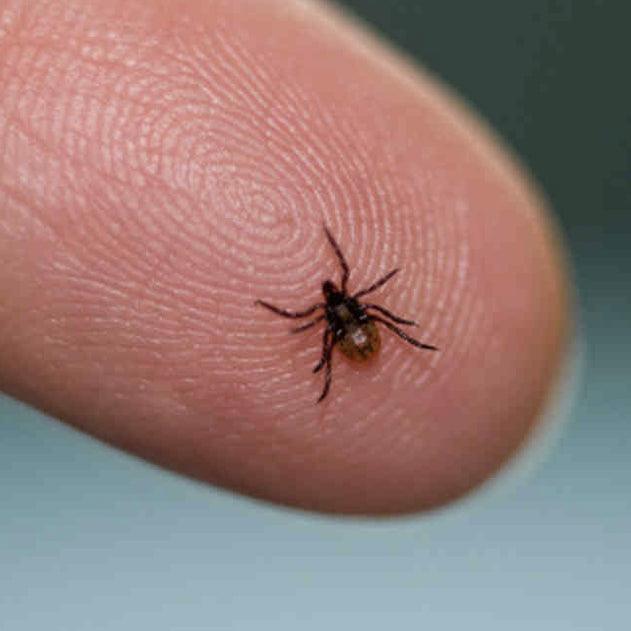If you ask the average person what they know about Lyme disease, they will likely say that it’s rare, it comes from a tick bite and it is treated with antibiotics.
Oh, if it were only that simple!
Unfortunately, the prevalence of Lyme disease continues to grow, it doesn’t always come from a tick bite, and antibiotics aren’t effective against the long-term symptoms.
Here’s what I mean—this is what you must know about Lyme disease.
In the beginning
Lyme disease originated around 1975 and was named after the town of Lyme, Connecticut, where it was first identified.
Within two years, the deer tick was linked to the infection.
Then in 1982, scientist Willy Burgdorfer, Ph.D. discovered the bacterium responsible for the infection and named it after himself--Borrelia burgdorferi.
The Lyme bacterium is extremely resourceful and has a knack for hiding and survival. It can live inside your cells and encase itself in a “cyst.” That’s why treatment can be complicated, and it can recur after antibiotics.
It starts with a tick bite—or maybe not!
The typical Lyme infection starts when a deer tick (called a black-legged tick) that’s carrying the bacterium jumps off a deer, bird, rodent or other animal and latches onto YOU.
It immediately starts numbing your skin so you can’t feel it. It prefers dark, secluded areas such as your armpits, behind your ears or your scalp.
But deer ticks aren’t the only culprits. According to the Michigan Lyme Disease Association, it’s also been found that other insects can spread Lyme disease— including other types of ticks, mosquitoes, and even spiders or fleas.
Once bitten, twice miserable
After being bitten, one of the first signs of Lyme is a short-lived butterfly-

shaped rash on your skin. After that, about 70 percent of people will go on to develop a bulls-eye rash on the skin that looks like this:
But note that you might not get a rash at all! The CDC estimates that at least 30 percent of Lyme sufferers don’t develop any type of rash.
Other symptoms of Lyme infection include:
- Flu-like symptoms (fever, fatigue, chills, sweats, muscle aches and neck pain)
- Poor sleep, chronic fatigue
- Nausea or loss of appetite
- Joint pains
The numbers and geography
According to the CDC, 476,000 new cases of Lyme disease are diagnosed in the US each year—that’s more than the total number of breast cancer and colon cancer cases in 2022 combined!—so it’s not as rare as you might think.
Fourteen states are responsible for 96 percent of the Lyme cases reported and are primarily located in the Northeast and Upper Midwest. Here they are in order of the largest to smallest number of cases:
- Maine
- Rhode Island
- West Virginia
- Delaware
- New Jersey
- Pennsylvania
- Wisconsin
- New Hampshire
- Connecticut
- Maryland
- New York
- Vermont
- Iowa
- Virginia
As far as testing goes, current estimates show that the standard ELISA test misses at least 35 percent of Lyme cases.
That’s because the Lyme bacterium can infect your white blood cells, and when this happens, they don't respond by producing antibodies like they should. Since the blood tests measure antibody production, you can get a false negative.
So people can suffer for a long time without being properly diagnosed!
Another test that is showing promise is direct microscopy, which is done by a limited number of laboratories at this point. It’s typically performed by holistic practitioners more than mainstream doctors, but you can certainly request if you are concerned.
It can become chronic and long-term
First of all, not everyone who is bitten by a Lyme-infected tick will even contract Lyme disease! Whether or not you get sick at all depends primarily on the strength of your immune system and your cellular function.
If you do contract Lyme disease, it is typically treated with antibiotics, but some people don’t fully recover after the initial treatment and their condition becomes chronic. Then you may be facing even STRONGER antibiotics as well as pain medications, steroids and/or anti-inflammatories.
When Lyme becomes chronic, people can suffer ongoing symptoms for months or years, and incur a significant impact on their quality of life.
Problems associated with chronic Lyme infection include debilitating fatigue, joint pains, arthritis, digestive problems, depression, headaches and even cognitive changes like difficulty concentrating, forgetfulness, and brain fog.
Prevention first!
As is the case for most illnesses, prevention is the key with Lyme disease.
If you spend time outdoors, check for ticks daily on yourself, children and pets.
Use a non-toxic, natural plant-based insect repellant.
Bathe or shower within two hours after coming in from the outdoors if possible.
If you’ve been in a tick-infested area, do a full body check and examine your clothing for ticks. Tossing your clothes in the dryer on high heat for an hour will kill any ticks you may have missed.
And see a doctor immediately if you develop a butterfly or bull’s-eye rash.
Other ways to fight back at Lyme disease
1- Engage the power of the right diet
Nourishing your body with a healthy diet is number one.
Having a nutritious diet of whole foods helps create a healthier gut environment. Since your gut is where most of your immune system resides, by promoting gut health, you are also supporting strong immune function!
Plus antioxidant vitamins and minerals can help fight the damage caused by infections and viruses, and the phytochemicals found in fresh fruits and vegetables have been shown to have immune-enhancing properties.
My Great Taste No Pain health system can guide you on having a healthy, nutrient-rich diet that is positively delicious (thanks to my outstanding recipes!), as well as show you how to construct meals that are easier for your system to digest.
So you can help prevent Lyme disease AND eliminate gas, bloating and heartburn too!
2- Enhance your immune function and fight inflammation
Having a strong immune system is vital to fighting and preventing infections of all kinds—especially Lyme disease—and when it comes to immune support, probiotics and vitamin D are the Superstars.
Super Shield PLUS multi-strain probiotic formula can help rebuild population of friendly gut bacteria and help support your immune system’s fight against determined “invaders” like viruses and bacterial infections. Plus Super Shield PLUS’s full-spectrum blend of 15 probiotic strains and 20 billion CFUs can help your gut microbiome bounce back from the harmful hit it takes from antibiotics.
Vitamin D is crucial to help control your immune system’s inflammatory responses—and the aches, pains and fever associated with Lyme are ALL inflammatory reactions. Since vitamin D is a common deficiency (primarily due to limited food sources and our avoidance of the sun), supplementing with a top-notch formula like Optimum DK Formula with FruiteX-B can ensure your body has what it needs.
Optimum DK Formula gives you a whopping 5,000 IUs of vitamin D3, plus vitamins K1 and K2 and the mineral boron, to provide top-notch immune support.
Lastly, nothing beats Nature’s anti-inflammatory—Omega-3 essential fatty acids—in combatting inflammation from all sources, including Lyme disease!
In addition to incorporating more fatty fish (like wild-caught salmon) into your diet, one of the best ways to ensure you have health-supporting levels of these crucial fats is to supplement with a pure, outstanding fish oil formula like VitalMega-3.
VitalMega-3 provides a whopping 1,200 mg of Omega-3 Fatty Acids in every 2-capsule dose, including 600 mg of Eicosapentaenoic Acid (EPA) and 400 mg of Docosahexaenoic Acid (DHA) in the 3:2 ratio recommended by health experts.
3- Additional helpful foods
Here are other foods that can fight Lyme disease and other infections:
- Foods such as garlic, leeks, onions, radishes and cabbage have anti-infectious properties.
- Helpful spices include thyme, fennel, clove, cayenne pepper and ginger.
- Mushrooms including cordyceps, reishi and maitake have been shown to activate immune response.
- Bone broth, which can help repair a leaky gut and enhance immune function.
To your health,
Sherry Brescia











